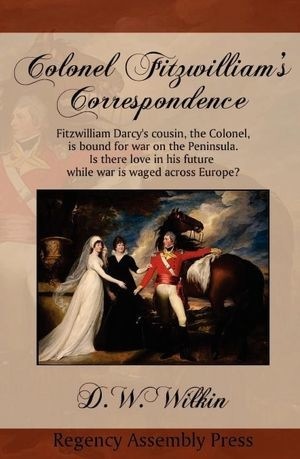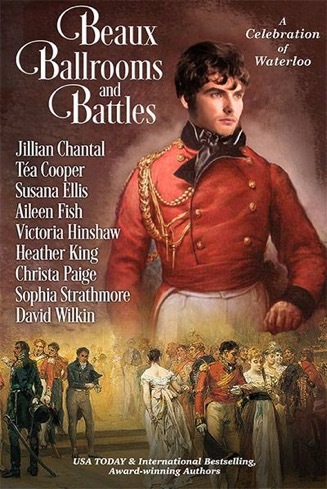D.W. Wilkin's Blog, page 44
June 28, 2016
A Trolling we Will Go Omnibus: The first three Fantasy stories of Humphrey and Gwendolyn
A Trolling We Will Go Omnibus:The Early Years
Not only do I write Regency and Romance, but I also have delved into Fantasy.
The Trolling series, (the first three are in print) is the story of a man, Humphrey. We meet him as he has left youth and become a man with a man’s responsibilities.
We follow him in a series of stories that encompass the stages of life. We see him when he starts his family, when he has older sons and the father son dynamic is tested.
We see him when his children begin to marry and have children, and at the end of his life when those he has loved, and those who were his friends proceed him over the threshold into death.
All this while he serves a kingdom troubled by monsters. Troubles that he and his friends will learn to deal with and rectify.
Here are the first three books together as one longer novel.
A Trolling We Will Go, Trolling Down to Old Mah Wee and Trolling’s Pass and Present.
Available in a variety of formats.
For $6.99 you can get this fantasy adventure.
Barnes and Noble for your Nook
The stories of Humphrey and Gwendolyn. Published separately in: A Trolling we Will Go, Trolling Down to Old Mah Wee and Trollings Pass and Present.
These are the tales of how a simple Woodcutter and an overly educated girl help save the kingdom without a king from an ancient evil. Long forgotten is the way to fight the Trolls.
Beasts that breed faster than rabbits it seems, and when they decide to migrate to the lands of humans, their seeming invulnerability spell doom for all in the kingdom of Torahn. Not only Torahn but all the human kingdoms that border the great mountains that divide the continent.
Feedback
If you have any commentary, thoughts, ideas about the book (especially if you buy it, read it and like it
June 27, 2016
Regency Personalities Series-Thomas Dundas 1st Baron Dundas
Regency Personalities Series
In my attempts to provide us with the details of the Regency, today I continue with one of the many period notables.
Thomas Dundas 1st Baron Dundas
16 February 1741 – 14 June 1820
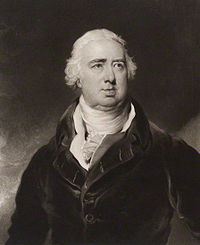
Thomas Dundas
Thomas Dundas 1st Baron Dundas was the only son of Sir Lawrence Dundas, 1st Baronet, the “Nabob of the North”. Following education at Eton and St. Andrews University he did the Grand Tour, then became Member of Parliament for Richmond, 1763–1768, then for Stirlingshire, 1768–1794. He was elevated to the peerage as Baron Dundas of Aske in August 1794, and was also Lord Lieutenant and Vice Admiral of Orkney and Shetland, Councillor of state to the Prince of Wales (later George IV), President of the Society of Scottish Antiquaries and Colonel of the North York Militia. He acquired Marske Hall in Yorkshire in 1762 after the death of Sir William Lowther, 3rd Baronet.
Thomas Dundas followed his father in having an interest in Grangemouth and in the Forth and Clyde Canal, under construction from 1768 to 1790, and he would have been aware of the 1789 trials on the canal of Patrick Miller of Dalswinton’s double-hulled paddle boat powered with a steam engine fitted by William Symington. In 1800 Dundas, as Governor of the Forth and Clyde Canal Company, engaged Symington to design a steam tug on the lines of a failed attempt by Captain John Schank for the Bridgewater Canal. At a meeting of the canal company’s directors on 5 June 1800 Dundas “produced a model of a boat by Captain Schank to be worked by a steam engine by Mr Symington”, and it was agreed this should be immediately put in hand.
The boat was built to Symington’s design. It had successful trials on the River Carron in June 1801 and further trials towing sloops from the river Forth up the Carron and thence along the Forth and Clyde Canal. The other proprietors of the canal were concerned about wave damage to the canal banks, and the Committee decided that the boat would “by no means answer the purpose”.
Symington had proposals for an improved boat which were presented in the form of a model, shown to Lord Dundas, of the boat which would become famous as the Charlotte Dundas, named in honour of one of his Lordship’s daughters. One account states that Lord Dundas had advised Symington to prepare the model and bring it to his Lordship in London, where Symington was introduced to the Duke of Bridgewater who was enthusiastic enough to immediately order eight boats of similar construction for his canal. Unfortunately the Duke of Bridgewater died a few days before the first sailing, and nothing came of this order.
Lord Dundas and some of his relatives and friends were on board for the first sailing of the boat on the canal in 1803, but despite the success of the Charlotte Dundas fears of erosion of the banks prevailed, and the trials were ended leaving Symington out-of-pocket.
He married Lady Charlotte FitzWilliam, the daughter of William FitzWilliam, 3rd Earl FitzWilliam, on 24 May 1764 and they had 14 children:
Lawrence Dundas, 1st Earl of Zetland (1766–1839)
Anne Dundas (1767)
Thomas Dundas (born 1768; died young)
Lt-Col. the Hon. William Lawrence Dundas (18 May 1770 – 1796), died in Santo Domingo
the Hon. Charles Lawrence Dundas (18 July 1771 – 25 January 1810), married Lady Caroline Beauclerk, daughter of Aubrey Beauclerk, 5th Duke of St Albans
the Hon. Margaret Dundas (9 November 1772 – 8 May 1852), married Archibald Spiers
the Hon. Charlotte Dundas (18 June 1774 – 5 January 1855), married Rev. William Wharton
the Hon. and Rev. Thomas Lawrence Dundas (12 October 1775 – 17 March 1848)
the Hon. Frances Laura Dundas (24 May 1777 – 27 November 1844), married Robert Chaloner
R-Adm. the Hon. George Heneage Lawrence Dundas (1778–1834)
Maj-Gen. the Hon. Sir Robert Lawrence Dundas (27 July 1780 – 23 November 1844)
Dorothy Dundas (August 1785 – December 1790)
the Hon. Mary Dundas (30 May 1787 – 1 November 1830), married Charles FitzWilliam, 5th Earl FitzWilliam
the Hon. Isabella Dundas (25 February 1790 – 6 December 1887), married Sir John Ramsden, 4th Baronet


A Jane Austen Sequel: Colonel Fitzwilliam’s Correspondence
Colonel Fitzwilliam’s Correspondence For your enjoyment, one of the Regency Romances I published.
It is available for sale and I hope that you will take the opportunity to order your copy.
For yourself or as a gift. It is now available in a variety of formats.
For just a few dollars this Regency Romance can be yours for your eReaders or physically in Trade Paperback.
Visit the dedicated Website
Barnes and Noble for your Nook or in Paperback
Amazon for your Kindle or in Trade Paperback
Witnessing his cousin marry for love and not money, as he felt destined to do, Colonel Fitzwilliam refused to himself to be jealous. He did not expect his acquaintance with the Bennet Clan to change that.
Catherine Bennet, often called Kitty, had not given a great deal of thought to how her life might change with her sisters Elizabeth and Jane becoming wed to rich and connected men. Certainly meeting Darcy’s handsome cousin, a Colonel, did not affect her.
But one had to admit that the connections of the Bingleys and Darcys were quite advantageous. All sorts of men desired introductions now that she had such wealthy new brothers.
Kitty knew that Lydia may have thought herself fortunate when she had married Wickham, the first Bennet daughter to wed. Kitty, though, knew that true fortune had come to her. She just wasn’t sure how best to apply herself.
Feedback
If you have any commentary, thoughts, ideas about the book (especially if you buy it, read it and like it
June 26, 2016
Regency Personalities Series-Henry Francis Cary
Regency Personalities Series
In my attempts to provide us with the details of the Regency, today I continue with one of the many period notables.
Henry Francis Cary
6 December 1772 – 14 August 1844
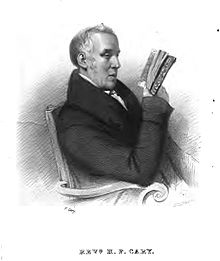
Henry Francis Cary
Henry Francis Cary was born in Gibraltar. He was the eldest son of William Cary, at the time a Captain of the First Regiment of Foot, by Henrietta daughter of Theophilus Brocas, Dean of Killala. His grandfather, Henry Cary was archdeacon, and his great grandfather, Mordecai Cary, bishop of that diocese.
He was educated at Rugby School and at the grammar schools of Sutton Coldfield and Birmingham, and at Christ Church, Oxford, which he entered in 1790 and studied French and Italian literature. While at school he regularly contributed to the Gentleman’s Magazine, and published a volume of Sonnets and Odes. He took holy orders and in 1797 became vicar of Abbots Bromley in Staffordshire. He held this benefice until his death. In 1800 he also became vicar of Kingsbury in Warwickshire.
At Christ Church he studied French and Italian literature which can be seen in his notes to his translation of Dante. The version of the Inferno was published in 1805 together with the original text.
Cary moved to London in 1808, where he became reader at the Berkeley Chapel and subsequently lecturer at Chiswick and curate of the Savoy Chapel. His version of the whole Divina Commedia in blank verse appeared in 1814. It was published at Cary’s own expense, as the publisher refused to undertake the risk, owing to the failure incurred over the Inferno. The translation was brought to the notice of Samuel Rogers by Thomas Moore. Rogers made some additions to an article on it by Ugo Foscolo in the Edinburgh Review. This article, and praise bestowed on the work by Coleridge in a lecture at the Royal Institution, led to a general acknowledgment of its merit. Cary’s Dante gradually took its place among standard works, passing through four editions in the translator’s lifetime.
In 1824 Cary published a translation of The Birds of Aristophanes, and, about 1834, of the Odes of Pindar. In 1826 he was appointed assistant-librarian in the British Museum, a post which he held for about eleven years. He resigned because the appointment of keeper of the printed books, which should have been his in the ordinary course of promotion, was refused to him when it fell vacant. In 1841 a crown pension of £200 a year, obtained through the efforts of Samuel Rogers, was conferred on him. Cary’s Lives of the early French Poets, and Lives of English Poets (from Samuel Johnson to Henry Kirke White), intended as a continuation of Johnson’s Lives of the Poets, were published in collected form in 1846. He died in Charlotte St, St George’s, Bloomsbury, London in 1844 and was buried in Poets’ Corner, Westminster Abbey.
A memoir was published by his son, Judge Henry Cary, in 1847. Another son, Francis Stephen Cary became a well-known art teacher, succeeding Henry Sass as the head of his art academy in London.


RAP (Regency Assembly Press) in need of Beta-Readers
Regency Assembly
Press
is looking for
Beta Readers
One novel is ready for Beta Reading
We have a continuation of Pride and Prejudice with Ms Caroline Bingley and her fortune at stake:
Do we think that Mr Hurst married his Bingley Bride without incentive? It is highly probable that Caroline Bingley, even though she has a sharp, acerbic tongue, still is in possession of a fortune and an astute fortune hunter who deciphers this may soon be on the road to, if not a happy marriage, one with financial security.
Please respond or send an email if you are interested


Beaux, Ballrooms, and Battles
A new Regency Anthology
Beaux, Ballrooms, and Battles anthology, celebrating the 200th anniversary of the victory at Waterloo in story.
Looks good, huh? The talented writer and digital artist, Aileen Fish created this.
It will be available digitally for $.99 and then after a short period of time sell for the regular price of $4.99
The Trade Paperback version will sell for $12.99
Click on the Amazon Link—>Amazon US

My story in the anthology is entitled: Not a Close Run Thing at All, which of course is a play on the famous misquote attributed to Arthur Wellesley, “a damn close-run thing” which really was “It has been a damned nice thing — the nearest run thing you ever saw in your life.”
Samantha, Lady Worcester had thought love was over for her, much like the war should have been. The Bastille had fallen shortly after she had been born. Her entire life the French and their Revolution had affected her and all whom she knew. Even to having determined who she married, though her husband now had been dead and buried these eight years.
Yet now Robert Barnes, a major-general in command of one of Wellington’s brigades, had appeared before her, years since he had been forgotten and dismissed. The man she had once loved, but because he had only been a captain with no fortune, her father had shown him the door.
With a battle at hand, she could not let down the defenses that surrounded her heart. Could she?
As her father’s hostess, she had travelled with him to Brussels where he served with the British delegation. Duty had taken her that night to the Duchess of Richmond’s ball. The last man she ever expected to see was Robert, who as a young captain of few prospects, had offered for her, only to be turned out by her father so that she could make an alliance with a much older, and better positioned (wealthy), aristocrat.Now, their forces were sure to engage Napoleon and the resurgent Grande Armée. Meeting Robert again just before he was to be pulled into such a horrific maelstrom surely was Fate’s cruelest trick ever. A fate her heart could not possibly withstand.
Here are the first few paragraphs to entice you:
Chapter One
“Come father, we shall be dreadfully late. Already the other guests of the inn have all departed for the ball.” Samantha distinctly heard him grunt. Her father did not like balls.
“You will not fault me if I stay to the card room with the other old gentlemen. We always have much to discuss,” he said. Her father served with the delegation led by Sir Charles Stuart.
In a moment he would complain about the pains caused by his gout. Always handy when social obligations were required and never present when he had his ‘important’ work to do.
“Father, are you sure that there is going to be a battle? I just can’t believe that Her Grace of Richmond is hosting a ball when the soldiers will be going off to fight.” Lady Worcester, who had been once just The Honourable Samantha Villiers, asked of her father, the second Viscount Haddington.
She had married the Earl of Worcester twelve years before, a man who had died before the Peace of Amiens had been shattered. They had no children, and as there were only distant heirs, the property went to those relations whilst the title became extinct. Samantha was the last Lady Worcester.
“The fighting is close at hand, but I have every confidence in the Duke of Wellington. Marvellous man. The French will be quite surprised when he takes this army and invades their lands,” her father said. “I am afraid I shall not be able to stand up and offer one dance with you, my good girl. The pains in my foot are troubling me.”
As Samantha had predicted.
That was always the excuse. Samantha was assured that her father had not once stood up to dance since her mother had died.
Over the many years she had had to study her father, for she had taken to being the hostess of his household upon the death of her husband, her mother having died before her own marriage, she had noted that her father was more impressed by title, position, and wealth, than by capabilities.
However, her own study of Wellesley, now the Duke, paralleled her father’s assessment at least when it came to Wellington’s successes as a commander. Yet the Duke had never faced Napoleon. Until only the most recent years, the Emperor of France had seldom lost any engagement. The Duke of Wellington had faced Napoleon’s lieutenants, and captains, but never the very best commanders of Le Grande Armée.
“It is understandable, Father, with your foot being troublesome, that you wish to proceed to the card room. You should enjoy this night. It will all be over too soon, and as you say, the engagement is imminent. Many here this evening we may never know again.” More than twenty years of war and she had known the loss of several military men.
Her father nodded. He had trained her to recognize the truth regarding these years of war. It was why he had been so against a liaison with Robert Barnes when she had first come out. Her other ardent suitor during her Season in ’03.
A time long ago.
Samantha and the Viscount were in the foyer of their lodgings. All the best places had been taken by those of great rank and wealth. This was a small inn that six other families shared.
She and her father were ready to leave for the ball, their hired carriage at the front of the building even then. Samantha had looked from the window and seen their coachman, Phillipe, waiting patiently.
He was paid for from her Worcester monies. The two years that Samantha had not lived with her father whilst married, had resulted in his losing near all the Haddington monies. He had retained very little of the capital, none of grandfather’s lands, and survived on monies advanced by the government to see to his office as well as what monies Lady Worcester was able to provide to the expenses of his household. Expenses that she managed with prudence.
Shaking her head and exiling the thought away, she pondered on a ball in a coach house. How novel to attend.
She had called on the Duchess several times, as they knew each other socially. Samantha well knew many of the women that had formed society here in Brussels. Her father’s stature with the delegation caused her to be a hostess to much smaller events than the ball.
With the assured defeat of Napoleon the war would end and her father’s service would be over. So also would the service of that other man who had asked for her before.
Robert had gone back to fight once war broke out again when the Peace of Amiens fell apart. She had since lost track of him.
Samantha had forced herself to lose track of him.


June 25, 2016
Regency Personalities Series-Admiral Sir John Orde 1st Baronet
Regency Personalities Series
In my attempts to provide us with the details of the Regency, today I continue with one of the many period notables.
Admiral Sir John Orde, 1st Baronet
22 December 1751 – 19 February 1824
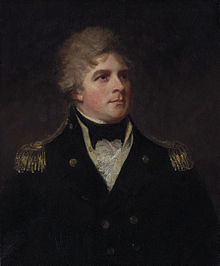
John Orde
Sir John Orde was the third son of John Orde, of Morpeth, Northumberland, and the brother of Thomas Orde-Powlett, 1st Baron Bolton. Remembered as a professional enemy of Nelson, Orde’s quarrel was actually more with Lord St Vincent and he never attacked Nelson personally.
Orde joined the Navy in 1766, gained the rank of Rear-Admiral in 1795, Vice-Admiral in 1799 and eventually Admiral of the Red. In 1805, despite being asked to strike his flag, he was made Admiral of the Blue and Admiral of the White in 1810.
As a Vice Admiral in 1805 he commanded a squadron of six ships of the line off Cadiz, in the flagship HMS Glory.
Orde served as the Governor of Dominica between 1783 and 1793 and was created 1st Baronet Orde, of Morpeth, co. Northumberland on 27 July 1790. From 1807 he served as Member of Parliament for Yarmouth.
Orde joined the Royal Navy in 1766 and was promoted to lieutenant in 1774. He served throughout the American revolutionary war (1775–1783), and was promoted to post captain on 19 May 1778, making him senior to Nelson by less than a month. Orde served as Governor of Dominica from 1783 until 1793 and on 9 August 1790 was made a baronet. He returned to naval service and was promoted Rear Admiral 1795.
In early 1798, Orde was appointed to the Mediterranean fleet as 3rd in command under John Jervis, 1st Earl of St Vincent. In May 1798, acting on his own initiative but with the support of Lord Spencer, the First Lord of the Admiralty; St Vincent gave command of a special squadron to Nelson.
As Nelson’s senior, Orde felt he had been unfairly passed over and complained to St Vincent who, annoyed at his subordinates questioning of his orders, relieved Orde and ordered him home.
Orde requested that he be court-martialled in order that he might have the opportunity to clear his name. The Board refused. Orde then requested that St Vincent be brought before a court-martial.
Again, the Board refused. The Board did go so far as to censure Jervis for not having supported his subordinates. Orde, unhappy with the outcome, challenged the earl to a duel. The challenge became public knowledge and the king ordered Jervis to decline. Before the challenge was formally declined however, Orde wrote to the Board to inform them that he had withdrawn it.
Neither side came out of the situation well. Had Nelson not won such an extraordinary victory at the Battle of the Nile, Jervis may have faced a court martial for not having supported Orde.
Unfortunately for Orde, Nelson’s victory was so complete that any criticism of Nelson or Jervis fell on deaf ears. Nelson naturally took Jervis’s side and regarded Orde as a personal enemy but Orde maintained that it was the principle of the appointment he objected to, not the person who had been chosen.
Things became worse for Orde when St Vincent was appointed First Lord of the Admiralty. St Vincent now controlled appointments and Orde found himself left ashore. St Vincent left the Admiralty in 1804 and Orde was offered command of a newly formed squadron off Cadiz. This further angered Nelson who saw it as a deliberate diminution of his authority.
Orde’s squadron of six ships of the line were stationed off Cadiz when Villenueve arrived with the Toulon fleet in April 1805. Orde’s ships, which were busy revictualling at the time, cast off their store ships and hastily formed line of battle. Villenueve however, with his eleven ships of the line and six frigates, made no attempt to engage the squadron. Greatly outnumbered Orde retired, an act that earned him condemnation from some, Nelson included. Villenueve gathered the ships that were ready to sail and put to sea again. Orde believed they were bound for the Channel but in fact Villenueve was on his way to the West Indies. Orde therefore took his squadron north to rendezvous with the Channel Fleet. Although technically correct, Orde’s behaviour was not in accordance with the country’s mood at the time and he was ordered to strike his flag. He never served at sea again.
In 1807 Orde became the member of parliament for Yarmouth, Isle of Wight and served in that capacity until his death on 19 February 1824.
Orde never appeared to reciprocate Nelson’s animosity and was one of the pall-bearers at Nelson’s funeral in January 1806.
Sir John Orde was married twice, to Margaret Emma Stephens in 1781, who died in 1790; and Jane Frere in 1793, with whom he had two children: John Powlett Orde, born 9 June 1803 and Anna Maria Fenn Orde, born 1806.


1st book in the Masqueraders Chocolate House series
I and five others have released the first in what could turn out to be a few, an anthology centered around Bath of the Georgian and Regency period. All proceeds go to charity, specifically the Great Ormond Street Hospital.
The Chocolate House
All For Love
[image error]
Our Authors are noted and award winning storytellers in the genre of Georgian and Regency era Historical Novels:
David W Wilkin
Francine Howarth
Giselle Marks
Jessica Schira
Susan Ruth
Elizabeth Bailey
A Sensual blend of Chocolate, Romance, Murder & Mystery at “Masqueraders”.
The beautiful City of Bath, famous for its Roman Spa, its Abbey, its Pump Room & Assembly Rooms, and Sally Lunn’s bun shop, is a place made famous within the literary world by the likes of Jane Austen, Georgette Heyer, and other authors of Georgian and Regency historical novels. Thus Bath is renowned as a place for intrigue and romance, but few readers will have stepped across the threshold of Masqueraders’, a notorious and fashionable Chocolate House, that existed within the city from 1700 to the latter part of the reign of William IV. What happened to it thereafter, no one knows, for sure. Nor does anyone know why Sally Lunn’s bun shop disappeared for decades until it was rediscovered.
So it could be said, essence of chocolate drifting on the ether denotes where the seemingly mystical Masqueraders’ once existed, and it is that spiritual essence that has brought authors together from around the globe, to pen a delightful collection of Georgian & Regency romances, that are, all, in some way, linked to The Chocolate House. We sincerely hope you will enjoy the individual stories, and be assured all the royalties earned will be donated to Great Ormond Street Hospital for Children, London.
The stories:
A Rose by Any Other – Giselle Marks.
A Fatal Connection – Elizabeth Bailey
The Runaway Duchess – Francine Howarth
Death at the Chocolate House – Susan Ruth
A-Pig-in-a-Poke – Jessica Schira
A Little Chocolate in the Morning – David W. Wilkin.
My story (As the author and owner of this Blog, I feel I can tell you more) is the story of Charles Watkins the Marquis of Rockford (for those who want the nitty gritty, ask and we can discuss the very specific creation of name details that went into this) who has recently come into his title and estates, his father dying just about a year before. Now he is to return to London after his mourning is over to use his seat in the House of Lords in aid of the war against Napoleon. He is not in Town to seek a bride though the dowager Marchioness should like that he attain one.
No, certainly not the schoolmate of his younger sister Emma, Lady Caroline Williamson, the daughter of the Earl of Feversham. A girl as young and silly as his sister, he would never wed, and certainly not fall in love with. But rescuing her from the clutches of a man who was old enough to be his own grandfather, that he could do with ease, and perhaps Panache.
Available at Amazon Digitally for your Kindle for $2.99 or Physically in Trade Paperback


June 24, 2016
Regency Personalities Series-Thomas Banks
Regency Personalities Series
In my attempts to provide us with the details of the Regency, today I continue with one of the many period notables.
Thomas Banks
December 29, 1735 – February 2, 1805
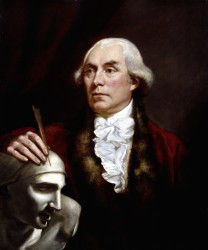
Thomas Banks
Thomas Banks was the son of William Banks, a surveyor who was land steward to the Duke of Beaufort, he was born in London. He was educated at Ross-on-Wye.
He was taught drawing by his father, and from 1750 to 1756 was apprenticed to a woodcarver, William Barlow, in London. In his spare time he worked at sculpture, spending his evenings in the studio of the Flemish émigré sculptor Peter Scheemakers. During this period he is known to have worked for the architect William Kent. Before 1772, when he obtained a travelling studentship given by the Royal Academy and proceeded to Rome, he had already exhibited several fine works.
Returning to England in 1779 he found that the taste for classic poetry, ever the source of his inspiration, no longer existed, and he spent two years in Saint Petersburg, being employed by the empress Catherine the Great, who purchased his Cupid Tormenting a Butterfly. On his return he modelled his colossal ‘Achilles Mourning the Loss of Briseis, a work full of force and passion; and then he was elected, in 1784, an associate of the Royal Academy and in the following year a full member.
Banks died in London on 2 February 1805. He is buried in Paddington Churchyard.
A monument to his memory was also erected in Westminster Abbey.
Among other works in St Paul’s Cathedral are the monuments to Captain George Blagden Westcott and Captain Richard Burgess, and in Westminster Abbey to Sir Eyre Coote, General Loten, Sir Clifton Wintringham and William Woollett. His bronze bust of Warren Hastings is in the National Portrait Gallery.
Banks’s best-known work is perhaps the colossal group of Shakespeare Attended by Painting and Poetry, now in the garden of New Place, Stratford-on-Avon.
The high-relief sculpture was commissioned in 1788 to be placed in a recess in the upper façade of John Boydell’s Shakespeare Gallery in Pall Mall.
Banks was paid 500 guineas for the group which depicts Shakespeare, reclining against a rock, between the Dramatic Muse and the Genius of Painting. Beneath it was panelled pedestal inscribed “He was a Man, take him for all in all, I shall not look upon his like again”. The sculpture remained in Pall Mall until the building was demolished in 1868 or 1869, when it was moved to New Place.
One of his most bizarre works is “Anatomical Crucifixion” (1801) held in the Hunterian (Anatomical) Museum in London. This shows a dissected body nailed to a cross.
Isaac Watts, Westminster Abbey (1774)
Bishop Thomas Newton, St. Mary-le-Bow (1782)
Sir Eyre Coote, Westminster Abbey (1783)
Dean Smith, Chester Cathedral (1787)
John Heaviside, Hatfield, Hertfordshire (1787)
Bishop Edmund Law, Carlisle Cathedral (1787)
Robert Markham, St Marys, Whitechapel, London (1788)
Giuseppe Baretti, Marylebone Chapel (1789)
Philip Yorke, 2nd Earl of Hardwicke, Flitton, Bedfordshire (1790)
Samuel Northcote, St Andrews, Plymouth (1791)
William Woollett, Westminster Abbey (1791)
Shukburgh Ashby, Hungarton, Leicestershire (1792)
Penelope Boothby, Ashbourne, Derby (1793)
Joseph Hurlock FRS, Stoke Newington Parish Church (1793)
Anna Matthews, Chester Cathedral (1793)
Joan Gideon Loten, Westminster Abbey (1793)
Sir Clifton Wintringham, Westminster Abbey (1794)
Mrs Halifax, Ewell, Surrey (1795)
Margaret Petrie, Lewisham Parish Church (1795)
Stephen Storace, Marylebone Parish Church (1796)
Colonel Thomas Kyd, memorial in Calcutta Botanical Gardens, India (1796)
Cornelia Millbank, Croft, Yorkshire (1796)
John Halliday, Halesowen, Worcestershire (1797)
John Clarke, Ickenham, Middlesex, (1800)
Captain Richard Burgess, St Paul’s Cathedral (1802)
Captain George Blagden Westcott, St Paul’s Cathedral (1805)


An Unofficial Guide to how to win the Scenarios of Rollercoaster Tycoon 3 Soaked and Wild
An Unofficial Guide to how to win the Scenarios of Rollercoaster Tycoon 3, Soaked! and WILD!
I have been a fan of this series of computer games since early in its release of the very first game. That game was done by one programmer, Chris Sawyer, and it was the first I recall of an internet hit. Websites were put up in dedication to this game where people showed off their creations, based on real amusement parks. These sites were funded by individuals, an expense that was not necessarily as cheap then as it is now. Nor as easy to program then as it might be to build a web page now.
Prima Books released game guides for each iteration of the game, Rollercoaster Tycoon 1, Rollercoaster Tycoon 2 and Rollercoaster Tycoon 3 (RCT3) but not for the expansion sets. And unlike the first two works, the third guide was riddled with incorrect solutions. As I played the game that frustrated me. And I took to the forums that Atari, the game publisher hosted to see if I could find a way to solve those scenarios that the Prima Guide had written up in error. Not finding any good advice, I created my own for the scenarios that the “Official” Guide had gotten wrong.
Solutions that if you followed my advice you would win the scenario and move on. But if you followed the
“Official” version you would fail and not be able to complete the game. My style and format being different than the folks at Prima, I continued for all the Scenarios that they had gotten right as well, though my solutions cut to the chase and got you to the winner’s circle more quickly, more directly.
My contributions to the “Official” Forum, got me a place as a playtester for both expansions to the game, Soaked and Wild. And for each of these games, I wrote the guides during the play testing phase so all the play testers could solve the scenarios, and then once again after the official release to make changes in the formula in case our aiding to perfect the game had changed matters. For this, Atari and Frontier (the actual programmers of the game) placed me within the game itself.
And for the longest time, these have been free at the “Official” Forums, as well as my own website dedicated to the game. But a short time ago, I noticed that Atari, after one of its bankruptcies had deleted their forums. So now I am releasing the Guide for one and all. I have added new material and it is over 150 pages, for all three games. It is available for the Kindle at present for $7.99. It is also available as a trade paperback for just a little bit more.
You can also find this at Smashwords, iBooks, Kobo and Barnes and Noble
(Click on the picture to purchase)
Not only are all 39 Scenarios covered, but there are sections covering every Cheat Code, Custom Scenery, the famous Small Park Competition, the Advanced Fireworks Editor, the Flying Camera Route Editor which are all the techniques every amusement park designer needs to make a fantastic park in Rollercoaster Tycoon 3.
Scenarios for RCT 3
1) Vanilla Hills
2) Goldrush
3) Checkered Flag
4) Box Office
5) Fright Night
6) Go With The Flow
7) Broom Lake
8) Valley of Kings
9) Gunslinger
10) Ghost Town
11) National Treasure
12) New Blood
13) Island Hopping
14) Cosmic Crags
15) La La Land
16) Mountain Rescue
17) The Money Pit
18) Paradise Island
Scenarios for Soaked!
1) Captain Blackheart’s Cove
2) Oasis of Fun
3) Lost Atlantis
4) Monster Lake
5) Fountain of Youth
6) World of the Sea
7) Treasure Island
8) Mountain Spring
9) Castaway Getaway
Scenarios for WILD!
1) Scrub Gardens
2) Ostrich Farms Plains
3) Egyptian Sand Dance
4) A Rollercoaster Odyssey
5) Zoo Rescue
6) Mine Mountain
7) Insect World
8) Rocky Coasters
9) Lost Land of the Dinosaurs
10) Tiger Forest
11) Raiders of the Lost Coaster
12) Saxon Farms




